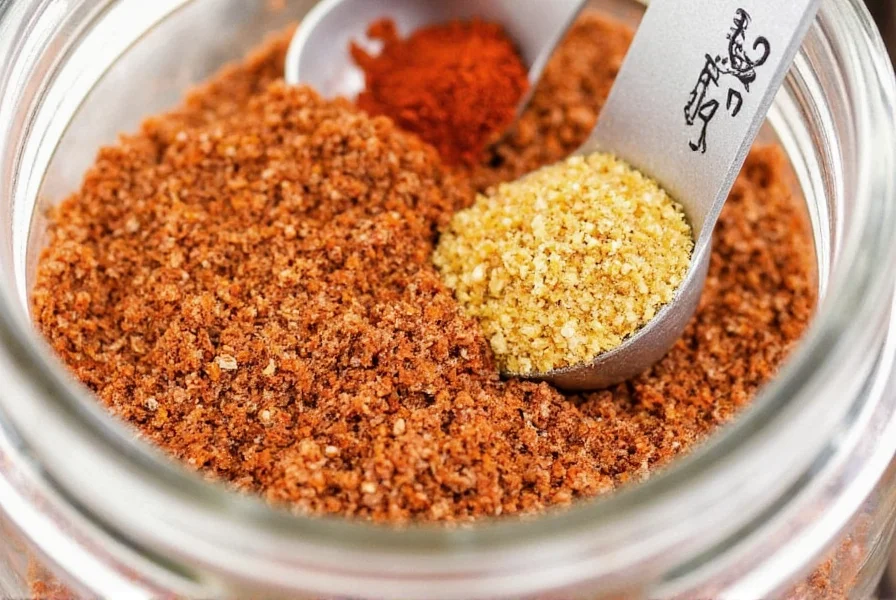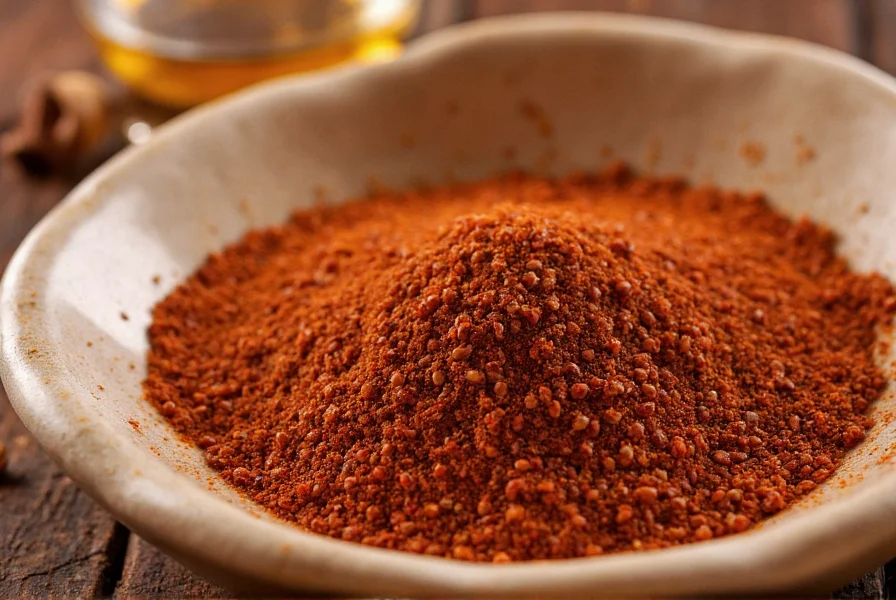Cajun seasoning often confuses newcomers who expect a specific pepper variety. In reality, this iconic blend represents the culinary heritage of Louisiana's Acadian settlers. Unlike single-ingredient spices, authentic Cajun seasoning combines multiple components to create complex flavor profiles essential to Southern cooking.
What Exactly Is Cajun Seasoning?
The term \"Cajun pepper\" refers to a complete seasoning mixture, not an individual pepper. This blend emerged from Louisiana's Cajun culture, where resourceful cooks combined available spices to enhance simple ingredients. Traditional Cajun seasoning avoids tomatoes and oregano—key differentiators from its cousin, Creole seasoning.
| Core Ingredients | Flavor Contribution | Typical Proportion |
|---|---|---|
| Paprika | Earthy base, vibrant color | 30-40% |
| Cayenne pepper | Controlled heat | 10-20% |
| Garlic powder | Savory depth | 15-25% |
| Onion powder | Sweet complexity | 10-15% |
| Black pepper | Sharp finish | 5-10% |
| White pepper | Subtle heat | 5-10% |
| Thyme & oregano | Herbal notes | 5% combined |
Cajun vs. Creole Seasoning: Clearing the Confusion
Many home cooks mistakenly use \"Cajun pepper\" and \"Creole seasoning\" interchangeably. While both originate from Louisiana, they have distinct characteristics:
- Cajun seasoning features more black and white pepper with minimal herbs, reflecting rural cooking traditions
- Creole seasoning includes more herbs like oregano and thyme, plus sometimes tomatoes, representing New Orleans' cosmopolitan influences
- Authentic Cajun blends contain no salt, allowing cooks to control sodium levels

Heat Level and Flavor Profile
When exploring what is Cajun pepper seasoning, understand its heat varies significantly between brands. Traditional blends aim for balanced heat rather than extreme spiciness:
- Standard commercial blends: 500-1,500 Scoville units (mild to medium)
- Homemade versions: Adjustable heat by varying cayenne content
- Flavor progression: Earthy paprika → savory garlic → building heat → peppery finish
Unlike single-pepper seasonings, authentic Cajun seasoning delivers layered heat that enhances rather than overwhelms dishes. The best blends create a \"warm hug\" sensation rather than painful burn.
Practical Uses for Cajun Seasoning
Mastering how to use Cajun pepper transforms ordinary meals. Professional chefs recommend these techniques:
- Dry rubs: Apply generously to proteins 30 minutes before cooking
- Finishing spice: Sprinkle on finished dishes for flavor bursts
- Oil infusion: Steep in olive oil for salad dressings or dipping sauces
- Vegetable enhancement: Toss with roasted potatoes or grilled vegetables
For authentic Cajun dishes, remember the \"holy trinity\" base of onions, celery, and bell peppers provides the foundation that Cajun seasoning complements.
Homemade Cajun Seasoning Recipe
Creating your own blend answers the common question \"what is Cajun pepper made of\" while ensuring freshness. This professional chef-approved recipe yields 1 cup:
- ¼ cup paprika (smoked for deeper flavor)
- 2 tablespoons garlic powder
- 2 tablespoons onion powder
- 1½ tablespoons cayenne pepper (adjust for heat preference)
- 1 tablespoon freshly ground black pepper
- 1 tablespoon white pepper
- 1½ teaspoons dried thyme
- 1½ teaspoons dried oregano
Mix thoroughly in a glass bowl, then store in an airtight container away from light. Properly stored, homemade Cajun seasoning maintains peak flavor for 6-8 months. For extra depth, toast whole peppercorns and spices before grinding.

Storage and Shelf Life Tips
Preserving the vibrant flavor of your Cajun seasoning requires proper storage:
- Use dark glass containers to protect from light degradation
- Keep away from stove heat and humidity
- Label containers with creation date
- Refresh blends every 6 months for optimal flavor
Commercial blends often contain anti-caking agents that extend shelf life but may compromise flavor purity. Homemade versions without these additives deliver superior taste but require more careful storage.
Classic Dishes Featuring Cajun Seasoning
Understanding authentic Cajun pepper applications connects you to Louisiana's culinary heritage. These traditional preparations showcase the seasoning's versatility:
- Shrimp étouffée: The seasoning thickens the roux-based sauce
- Grilled chicken: Creates flavorful crust without overpowering meat
- Blackened fish: Forms signature charred exterior
- Roasted vegetables: Enhances natural sweetness
- Bean dishes: Adds depth to vegetarian preparations
When preparing Cajun dishes, remember that less is often more—the seasoning should complement ingredients, not dominate them.
Frequently Asked Questions
Is Cajun seasoning the same as cayenne pepper?
No, Cajun seasoning contains cayenne pepper as one component among many. While cayenne provides heat, authentic Cajun blends include paprika, garlic, onion, and various peppers for complex flavor. Cayenne alone delivers intense, one-dimensional heat without the earthy depth of proper Cajun seasoning.
How spicy is traditional Cajun pepper seasoning?
Authentic Cajun seasoning ranges from mild to medium heat (500-1,500 Scoville units). The heat builds gradually rather than hitting immediately like pure cayenne. Most traditional blends prioritize flavor complexity over extreme spiciness, creating what Louisiana chefs call \"a warm embrace\" rather than painful burn.
Can I substitute paprika for Cajun seasoning?
Paprika alone cannot replicate Cajun seasoning's complexity. While paprika forms the base, authentic blends require additional components like garlic powder, onion powder, and cayenne. For closest approximation, combine 2 parts paprika with 1 part garlic powder, ½ part cayenne, and ½ part black pepper—but homemade blends always outperform substitutions.
Does authentic Cajun seasoning contain salt?
Traditional Cajun seasoning contains no added salt, allowing cooks to control sodium levels separately. Many commercial blends include salt for convenience, but serious chefs prefer salt-free versions to maintain recipe precision. When making homemade Cajun seasoning, omit salt to preserve versatility across dishes.
What's the difference between Cajun and Creole seasoning?
Cajun seasoning features more black and white pepper with minimal herbs, reflecting rural Louisiana cooking. Creole seasoning contains more oregano and thyme, plus sometimes tomatoes, representing New Orleans' cosmopolitan influences. Both blends share paprika and garlic bases, but their herb profiles and regional origins create distinct flavor experiences.











 浙公网安备
33010002000092号
浙公网安备
33010002000092号 浙B2-20120091-4
浙B2-20120091-4